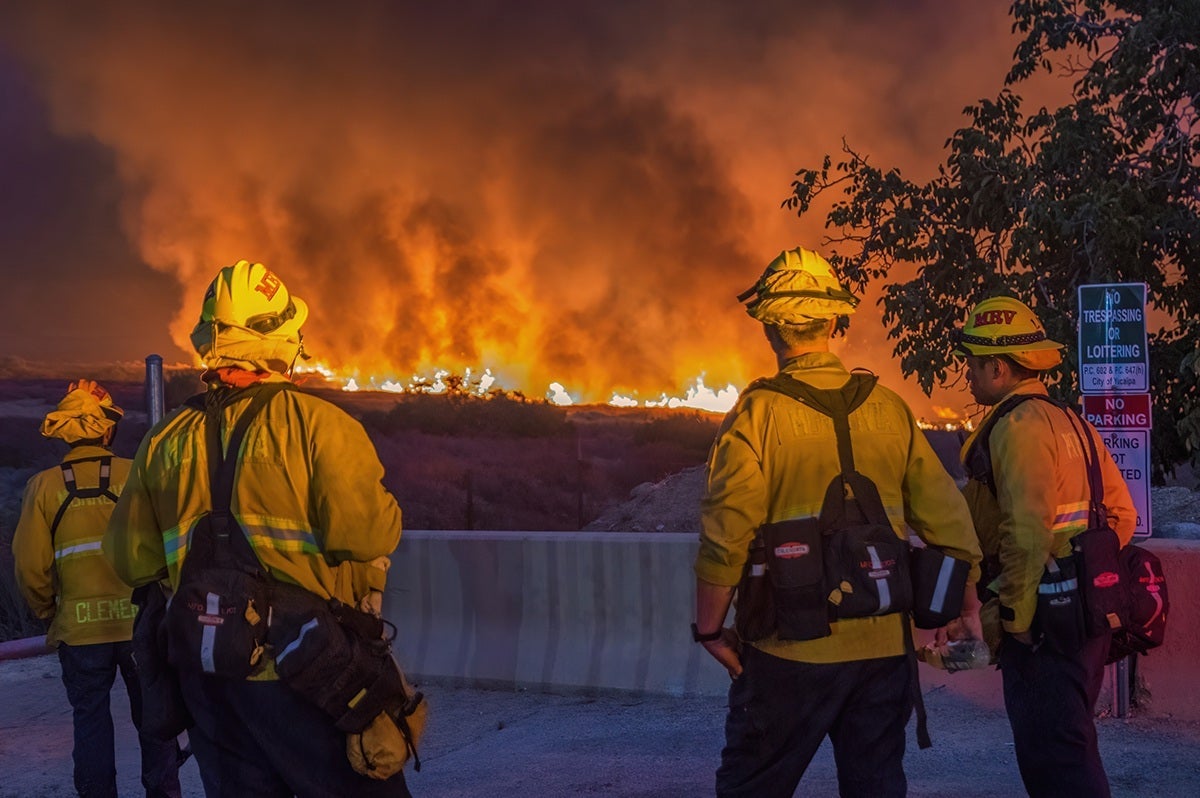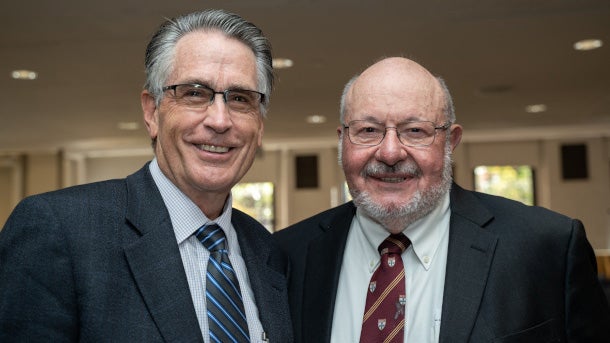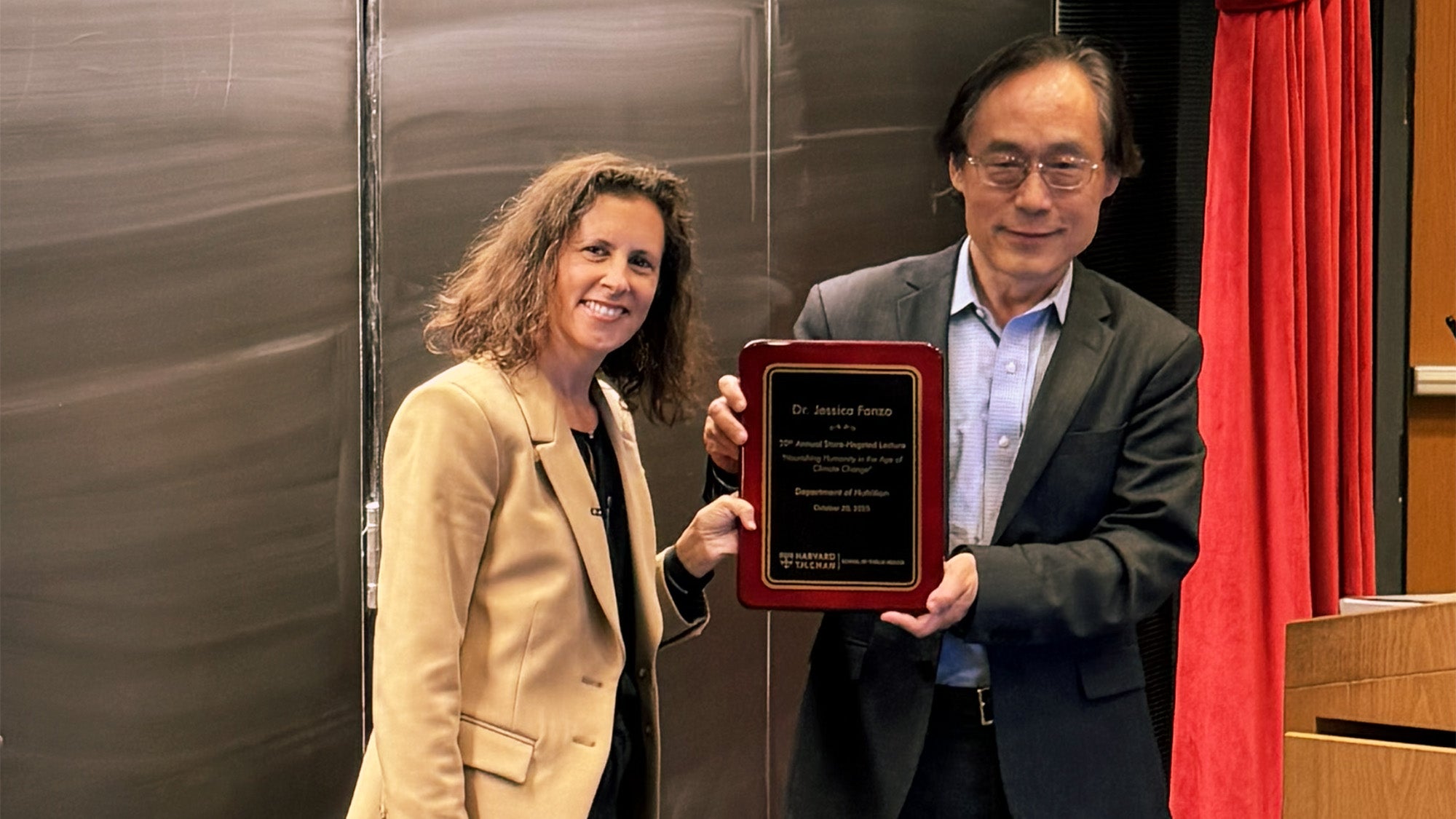The power of data in a crisis

CrisisReady program is building a platform of data, analytics, and tools to guide decision-making during public health emergencies
November 19, 2021—During disease outbreaks, hurricanes, and other public health crises, real-time data can help save lives—but only if governments and response agencies know how to use it. Early in the pandemic, researchers from Harvard T.H. Chan School of Public Health helped develop a global network of experts—the COVID-19 Mobility Data Network (CMDN)—to serve as intermediaries in the data pipeline between technology companies and public health decision-makers. Now, they’ve expanded this work into CrisisReady, a platform that aims to embed data-driven decision-making into local disaster planning around the world.
Led by Caroline Buckee, professor of epidemiology, and Satchit Balsari, assistant professor in the Department of Global Health and Population, the program taps into researchers from CMDN and others who can work with local partners during a crisis to provide curated data, situation reports and data visualizations for the area, and training and support.
“I really believe that it is the responsibility of researchers who study in public health to take the science that they develop and try to apply it to the populations most affected by the problem,” Buckee said. “CrisisReady represents our effort to actually make our science actionable in the real world.”
Hurricanes and lockdowns
Buckee has worked for the last decade building systems to track and forecast the spread of lethal infections such as malaria and Ebola. A big part of this work has been using aggregated, privacy-protected location data from mobile phones to study how and why diseases spread.
In the aftermath of Hurricane Maria in Puerto Rico in 2017, Buckee and Balsari collaborated to uncover the true death toll of the storm. While the Puerto Rican government initially attributed just 64 deaths to the hurricane, the researchers found that thousands more could be tied to it indirectly, including the deaths of people with chronic conditions who were unable to access needed medical care. The study and the media attention that followed prompted the government to significantly revise up mortality numbers, and also sparked conversations about how to prepare for and quantify the impact of natural disasters—not just in terms of mortality but also the long-term consequences for medically vulnerable populations.
When COVID-19 hit, Buckee, Balsari, and others in their field quickly realized that mobility data would be a useful tool for helping policymakers determine the impact and effectiveness of measures like lockdowns and travel restrictions, and to help forecast what might come next in the pandemic.
CMDN formed as a group of five researchers from the School and from the nonprofit humanitarian organization Direct Relief, before growing to more than 100 researchers and policymakers around the world. The network met weekly via Zoom to share methods and data resources, and to link researchers with policymakers. The group ultimately worked with more than 60 city, state, and national governments.
Buckee said that the biggest lesson she learned during the process was that there is no one-size-fits-all solution for using data in a crisis. Tools must be tailored to each context and be able to evolve as needs change. In short, she said, “to have policy impact, you really must have humans in the loop.”
Scaling up
The researchers’ efforts on COVID-19 led to additional work during wildfires in California and hurricanes on the Gulf Coast, at the request of officials in local health departments and federal response agencies. It became clear that lessons they’d learned during the pandemic were applicable to other types of disasters. Partnering with Andrew Schroder, vice president of research and analysis at Direct Relief, with whom they started CMDN, they launched CrisisReady in January and are continuing to build the platform.
Balsari explained that a complex process is involved in linking raw data to a decision in a public health context. Data must be gathered from multiple sources, and systems created for the way the data is processed, kept private, and shared. Then, it must be analyzed and presented in a way that is useful for informing policy around a specific public health outcome. As the platform grows, the group plans to build educational tools to give more people the capacity to manage data during crises at the local level.
“We’re heading into a decade where we are going to see an exponential data growth rate,” Buckee said. “The goals is for CrisisReady to help policymakers and scientists figure out safe and sustainable ways to use this data for public good.”
Photo: iStock/Dramaguy11


